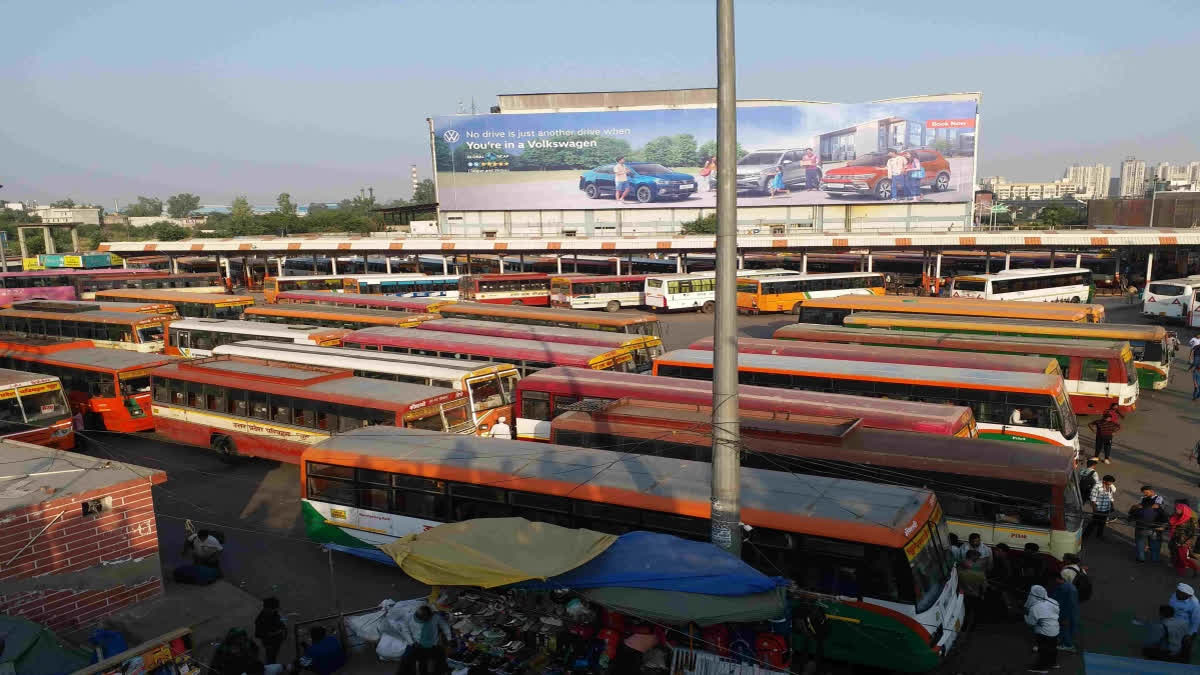New Delhi: To prevent increasing pollution in the capital, the Commission for Air Quality Management (CAQM) has issued an order that BS-III and BS-IV diesel buses will not be allowed to enter Delhi from November 1. Only BS-VI buses of CNG, electric and diesel will be allowed to operate. This rule will also apply to private buses as well. With the implementation of this rule, more than 60 per cent of buses will stop operating, which will have a direct impact on passengers.
More than 5,000 buses come to Delhi's Anand Vihar, Sarai Kale Khan, Kashmiri Gate and other bus stands from many other states, including Uttar Pradesh, Uttarakhand, Haryana, Rajasthan, Punjab, Himachal Pradesh. In this, about 1,000 buses of UPSRTC and more than 300 buses of Uttarakhand Transport Department come to Delhi.
According to Transport Department officials, about 60 per cent of the buses coming to Delhi from different states are of BS-III and BS-IV. Apart from this, more than 1,000 buses of various tours and travels run from Delhi.
The CAQM has also fixed the time to remove old diesel buses from non-NCR areas of Uttar Pradesh and Rajasthan entering NCR cities and Delhi. From July next year, only BS-VI buses, apart from electric and CNG, will operate in the entire NCR. This will reduce pollution significantly.
Also read: Phase out diesel autos in NCR by 2026: air quality panel
The CAQM has allowed the operation of CNG, electric and BS-VI diesel buses under an interim arrangement. In the next three years, only CNG and electric buses will run from NCR cities. On the other hand, BS-VI buses are being purchased in other states, including Uttar Pradesh.
The UPSRTC has written a letter to the CAQM demanding relaxation on the operation of BS-III and BS-IV buses even after November 1 to provide relief to the passengers given the festival.
UPSRTC regional manager Kesari Nand Chaudhary said that most of the buses going to Delhi will be replaced with BS-VI buses. For this, new BS-VI buses are being purchased. However, given the crowd during the festival, additional buses are also operated. People from Eastern Uttar Pradesh and Bihar living in Delhi NCR go to their homes in large numbers for Diwali and Chhath festivals.
On the other hand, given the possibility of an increase in pollution in Delhi, restrictions of the second phase of GRAP (Graded Response Action Plan) have been implemented. The situation is such that smog has started appearing on the BRT road in South Delhi in October itself. At present the visibility here is 400 metres, which is expected to reduce further in the coming days.



